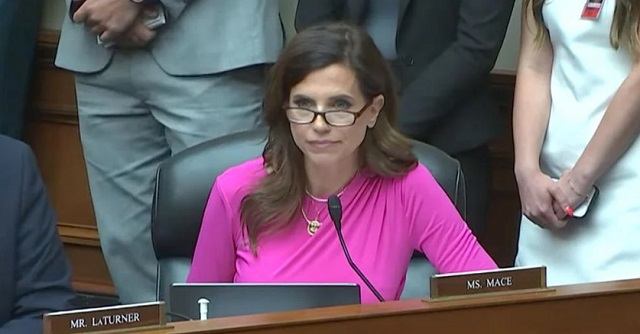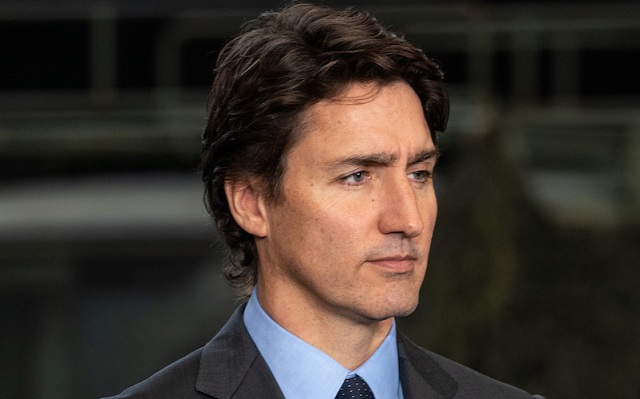Also Interesting
The Role of Immigrants in Canada’s Thriving Manufacturing Industry

The manufacturing sector has developed into a wealth-creating powerhouse, with a diverse workforce within which immigrants are the leading players. The craftsmen or the artisans can be considered as a repository of knowledge, talent, and viewpoints that contribute not only to better workplaces but also to workplaces that are full of sense and purpose. Globalization can be definitely called the new reality of the world. Consequently, this is why migrants play a big role in pushing the Canadian manufacturing sector toward innovation and competitiveness. This reality raises a question: What actions can immigrants take to ensure that this field does not experience detrimental effects as a result of their integration? We interviewed an immigration consultant in Calgary and came to know the problems and new opportunities that an immigrant faces in this area.
In the midst of adjustments in the global trade structure and technological development, the manufacturing industry in Canada has demonstrated great adaptability, with immigrants being the driving force. They are not just the numbers but the figures who fill the gaps, enhance innovations, and make the country competitive in the worldwide competition. This understanding requires that we take a retrospective view of the history of the Canadian manufacturing industry, and examine its present condition and the subtleties of the way immigrants enrich it.
Foundations of Canada’s Manufacturing Sector
The story of Canada’s manufacturing industry is a long, complex, and dynamic one that is marked by change, survival, and innovation. Fundamentally, it has transformed from the time when the sector centered on the regional markets and local basic goods to an integral part of the international trading system.
- Playing a pivotal role in the success of textile mills and food processing plants, establishing the center for future industrial activity.
- A period when manufacturing was decentralized and went through an expansion both locally and internationally driven by the rising demand from the domestic market and export opportunities.
- The manufacturing industry is going through exciting changes as newer technologies, from automation to digital manufacturing, are giving it a new shape.
- The establishment of free trade agreements which use different rules and regulations, allows countries to easily access the global market.
This has not been a standalone process; rather, it has been a process characterized by the interplay of a multitude of factors. This has been advanced by a system of policymaking, research, and workforce development, where immigrants have made an enormous contribution. Their arrival was at the precise moment when the industry was experiencing a key shift, and therefore they brought along new skills and labor force to fully seize the new prospects. This is manifested through the post-war expansion, a period when local labor supply failed to meet the demand, and also the current era characterized by technological advancement where innovation and specialized knowledge are vital, immigrants have been active participants, contributing to the growth of the sector.
Immigrants in the Manufacturing Workforce
The impact of immigrants on Canada’s manufacturing sector is profound and multifaceted. They bring essential skills, fresh perspectives, and a willingness to innovate, which are critical in today’s fast-paced, technology-driven environment.
- Many immigrants possess specialized skills that are in short supply domestically. From advanced manufacturing techniques to expertise in emerging technologies, they help fill vital roles.
- Diverse teams are known to be more innovative, and the multicultural nature of Canada’s immigrant workforce brings different viewpoints and ideas, driving creativity and problem-solving.
- Immigrants often have networks and knowledge of international markets, aiding Canadian manufacturers in expanding their reach and understanding global consumer needs.
Why Immigrants Choose Manufacturing
Manufacturing offers immigrants a pathway to meaningful employment and integration into Canadian society. The sector’s diverse range of opportunities, from production lines to engineering and management positions, appeals to a wide skill set. Additionally, the stability and growth prospects within the industry, coupled with supportive community networks and governmental programs, make manufacturing an attractive option for many newcomers. Programs aimed at skill development and credential recognition further facilitate the integration of immigrants into this sector, ensuring that they not only contribute to Canada’s economic prosperity but also find personal growth and fulfillment.
Overcoming Challenges
While the integration of immigrants into Canada’s manufacturing sector offers numerous benefits, it’s not without its challenges. Language barriers, cultural differences, and the recognition of foreign credentials pose significant hurdles for many newcomers. These challenges can impact an immigrant’s ability to fully participate in the workforce and advance in their careers. However, concerted efforts from various stakeholders, including governments, industry bodies, and community organizations, are making strides in addressing these issues. Through language training programs, workplace integration initiatives, and credential assessment services, immigrants are receiving the support they need to overcome these barriers, ensuring they can contribute their full potential to the manufacturing industry.
Moreover, the manufacturing sector itself is evolving to become more inclusive and accommodating. Companies are increasingly recognizing the value of a diverse workforce and are implementing policies and practices that promote inclusion. This includes creating more culturally sensitive work environments and offering mentorship and support programs specifically designed for immigrant employees. These efforts not only help immigrants to overcome initial challenges but also pave the way for their long-term success and satisfaction in the manufacturing industry.
Support from Government and Industry
Governmental Initiatives
The Canadian government has played a pivotal role in supporting the integration of immigrants into the manufacturing sector. Through various programs and initiatives, it aims to ease the transition for newcomers and help them find employment in their field of expertise. For instance, the Federal Skilled Worker Program targets skilled immigrants, facilitating their entry into Canada based on their ability to contribute to the economy, including the manufacturing sector. Additionally, the government offers language training and credential recognition services, crucial for immigrants to gain employment in their chosen fields.
Industry Support
On the other side, the manufacturing industry itself has taken proactive steps to welcome and integrate immigrant workers. Many companies have established their own training and mentorship programs, designed to bridge any skills gap and acquaint newcomers with the Canadian workplace culture. Industry associations also collaborate with educational institutions to create tailored programs that prepare immigrants for the specific needs of the manufacturing sector. These initiatives not only help immigrants secure employment but also ensure they have the skills and knowledge necessary to excel in their roles.
Embracing Change for a Brighter Future
As Canada’s manufacturing sector continues to grow, so does the need for workers with the skills to meet the sector’s evolving needs. Immigrants, who bring different skills and ideas, are key to addressing this labor shortage. In addition to inclusive cultural practices, both immigrants and employers must continue to improve themselves to ensure successful integration.
Employers and employees in the manufacturing sector should create a culture for training and enhancement of skills. For immigrants, to continuously follow the industry trends and technologies and for employers, to make suitable investments in the ongoing training and professional development programs of their employees. This is more than only a personal career advancement; it is a step towards the growth of the entire sector thus boosting the competitive edge of Canada’s manufacturing industry globally. This passionate zeal for change and adjustment is what will be the key factor in the two – the success of the industry and the widespread workforce.
Also Interesting
How to Improve Garage Door Insulation for Energy Efficiency

During all seasons, many people suffer from extreme temperatures in their garages – either too hot or too cold – and the place becomes uncomfortable as well as inefficient. Whether you are hit by the scorching summer heat or frozen by winter, stabilizing a favorable temperature in your garage can be a great challenge. Insulating the garage is one of the best ways to improve its energy efficiency.
This handbook will take you through simple steps of enhancing your garage door’s insulation in order to make it energy efficient. Moreover, additional tips will be given to ensure that the garage remains a useful and cozy part of your house all year round.
Types Of Garage Door Insulation
To start saving energy, choose the best garage door insulation. Various types of insulation keep warmth in without using too much electricity for different reasons. The following are some examples: Reflective foil insulation reflects heat away; foam board insulation has great thermal resistance; and batt insulation is easy to install and prevents heat loss effectively.
As explained by the experts at garage door repair Toronto, If you’re unsure about which one is right for you or how it should be done, consult with a professional service that will guide you through selecting and setting up suitable materials based on your requirements so as to make sure all year around comfort while being energy efficient at home.
Tips on How to Improve Garage Door Insulation
If you are looking forward to having a warmer winter this year as well as enjoying cooler summers, achieving the correct garage door insulation could totally transform your experience. Ensure that there is no inlet or outlet for air by blocking all possible spaces through which it could pass and beef up its interior with some rigid encasement too for good measure.
Fill in Gaps
This method aims at improving energy efficiency through filling up crevices on the gate which may be allowing leakage of air. When implemented, one can expect reduced electricity expenses due to minimal heating or cooling requirements and a more habitable environment.
● Check if there are any openings around where light from outside can be seen during daytime or if you feel a draft, that’s a clear indication of air seepage.
● The use of weather strips along edges acts as a barrier against unwanted maintaining normal flow within.
● Apply small beads of caulk to seal off tiny cracks found along frames.
● Fit new bottom seals where old ones are worn out since they are essential components in the fight against door drafts.
● For larger gaps, use expandable foam insulation which is effective at sealing them off and preventing airflow.
● Ensure that all fasteners and brackets are tight; sometimes gaps may appear simply due to things coming loose over time.
● Lastly, don’t forget about corners—they tend to be overlooked but can let out quite a bit if they’re not properly sealed.
Insulate the door
After plugging up any openings, another good step towards energy efficiency would be directly insulating your garage door. Selecting the proper material type is key during this phase so that you can achieve desired results without compromising structural integrity or aesthetics.
● The insulation should be secured to the door using fasteners or adhesive tape made for this purpose. It must remain flat and not push out the panels.
● Use weather-stripping or aluminum tape on the edges for a tight fit that will prevent any air leaks.
● Shut your garage door and look for any places you missed or spots that seem like they could let in drafts. You may need to add more sealing material.
If you add insulation directly to your garage door, it will make your house more comfortable and lower energy costs over time.
Insulation for Garage Walls and Ceiling
Insulating the walls and ceiling of your garage can have a huge impact on how much energy is used. It helps to keep the space warm during winter and cool in summer which saves money for heating and cooling.
● Find suitable insulation materials – fiberglass batts, foam board, or spray foam are good options depending on where you live and what you can afford.
● Accurately measure the area so that you do not buy too much or too little insulation.
● Cut insulation so it fits tightly between wall studs and ceiling joists because this stops hot/cold air from escaping through gaps.
● Attach each piece using the correct fasteners for your chosen type of insulating material. For example, adhesive works great with foam boards while staples work well with fiberglass batts.
● Put drywall or another type of wall paneling over insulation for a cleaner look and more fire resistance.
● Boost thermal performance by sealing all seams and edges with caulk or foam sealant to block drafts and moisture.
● If you live in an extremely hot climate, consider installing a radiant barrier.
Reflective foil placed over insulation can greatly reduce heat transfer from the sun-baked roof.
● Do not neglect the garage door itself – combining wall and ceiling insulation with an insulated garage door will maximize energy savings.
● Finally, check with local building codes for compliance, especially concerning ventilation to prevent moisture buildup.
Other Ways You Can Save Energy In Your Garage
If you want to take your garage’s energy efficiency up another notch, there are even more tricks you can try. Upgrade to an insulated door or add weather stripping for starters. You can also explore additional measures that will cut down on energy costs and keep your garage cozy no matter the season.
Install Insulated Garage Doors
Opting for insulated garage doors is a great way to save energy. Designed to keep heat in during the winter and out during the summer, these doors help maintain a consistent temperature inside the garage which can lead to lower electricity bills.
If you want to insulate your garage door, consider installing insulated doors. This can also reduce noise from outside, which is great for people who use their garage as a workshop or living space.
Enhancing the insulation properties of the door can be done by using weather stripping around it. What this does is seal off any gaps where air may seep in or out. Additionally, selecting an energy-efficient model of garage door opener contributes to overall system efficiency.
Use weather stripping
After installing insulated garage doors, another thing you might want to do is install weather stripping too. This will help keep any unwanted hot or cold air from slipping into your garage while keeping comfortable temperatures inside. It seals around where the bottom of the door meets the floor and its frame. Working undercover – inexpensive yet effective, weather stripping also fights against drafts; thus reducing one’s energy bill. Tools required for installation are minimal and therefore can be done by anyone with a little spare time.
Consider a garage door opener with energy saving features
If you’re going through the trouble of adding a weather seal, another energy-efficient trick would involve choosing openers with these features. This might include ones that have a “standby mode” setting which uses minimal power when not in use, or automatically switches off lights on the unit after some time of no activity.
This means lower energy bills and a happier planet. Some even have battery backups to keep things running during power outages, adding convenience without sacrificing eco-friendliness.
Opting for these advanced openers can make a noticeable difference in managing your home’s energy consumption. They work quietly and efficiently, reducing noise while also cutting down on unnecessary power use.
To conclude
Improving your garage door’s insulation is a smart move. It keeps your space comfy, slashes those energy bills, and even quiets down noise from outside. Start with some basic fixes like sealing gaps and adding proper insulation to the door itself.
Don’t forget the walls and ceiling. And if you’re feeling fancy, upgrading your entire door or picking a smarter opener can make a huge difference. Energy efficiency in the garage is totally achievable with these simple steps.
Also Interesting
The Future of Fault Detection: AI and IoT Innovations in Garage Door Repair

AI and IoT are making big changes to how we fix garage doors. They help find problems faster and better. With AI, we can watch garage doors all the time. IoT lets us see if something is wrong right away. This makes fixing garage doors easier. It also makes customers happier because their problems get solved quickly.
Sometimes, garage doors stop working out of the blue. People don’t know why. But the Predictive Maintenance Market is helping. This market is getting bigger and bigger. By 2029, it could be worth $47.8 billion! This growth is thanks to new IoT tech and ways to understand data. As this market grows, using AI and IoT for garage door repairs gets better. We can find issues before they become big problems. This lets us fix things ahead of time.
This article talks about how AI and IoT change garage door fixes. These new ways help find and fix problems fast. With AI and IoT, garage door repair get simpler and easier. Homeowners can get their garage door issues solved quickly with these
new ways.
AI Spots Garage Door Faults
Artificial intelligence makes it simpler to find issues with garage doors. The systems work all the time, day and night. They look at information constantly to catch problems early. This prevents bigger issues from happening later. Catching
problems early keeps garage doors working well for longer; it also reduces the chance of sudden breakdowns.
Sophisticated learning models drive these smart systems. Over time, the models study lots of data. They learn to recognize patterns that point to future issues. As they take in more information, they get better at spotting potential problems. This
leads to less downtime for repairs. It also helps garage doors run smoothly. With intelligent technology, homeowners feel secure. They know their garage doors are being watched carefully.
IoT for Real-Time Garage Door Monitoring
Moving beyond smart fault finding, IoT monitors garage doors closely. Cameras and motion sensors make this work. These gadgets send alerts to your phone if something odd happens. You stay informed, home or not.
Smart home tech lets you check your garage door anytime. You can see if it’s open or shut and control it remotely. This adds security by enabling quick action if needed. With IoT monitoring your garage door, you can relax knowing all is secure.
Breakthroughs in Fault Detection Technologies
New advances change how we spot garage door issues. Smart sensors and constant IoT tracking enable smarter repairs.
New Sensors Help Fix Garage Doors
Special sensors use computer programs to find issues with garage doors before they become big problems. With these sensors, your garage door can understand how it is working right now. This smart technology makes fixing problems easier.
The sensors also prepare for future issues by looking at data over time. They learn from patterns and predict when a part might break down. This helps avoid unexpected breakdowns, making maintenance easier and saving money in the long run. These sensors bring a new level of accuracy, changing how we take care of our garage doors.
Watching Devices All the Time
Smart gadgets have changed many businesses, like garage door fixing. These gadgets can track how products work and use energy. When gadgets connect to products, they can see how they work and use energy in real-time. This gives useful data to make things better and fix them.
Smart gadgets can quickly spot when things aren’t working right. They can find problems fast so there’s less downtime. Bigger issues are less likely too. By looking at data and tracking where things are, smart gadgets make it easy to manage info from different gadgets. This makes it a way better to find faults and fix things. Problems get found and fixed quickly. In the end, fixing costs less and things work better.

The Benefits of Using AI and IoT for Garage Door Services
New ways to find problems with garage doors are changing how we fix them. Smart sensors and tracking can now watch garage doors all the time. This helps find issues before they get worse. These systems use data and computer programs to
look for patterns. They can see if a garage door is having problems and needs repairs. Finding problems early means unexpected breakdowns are less likely. It also helps plan when a garage door needs maintenance, so it can stay working
smoothly.
Finding Problems Quickly and Accurately
AI and IoT help find problems with garage doors quickly and accurately. AI systems use data from sensors to find errors or potential issues fast. This means garage doors get fixed sooner, often before they break down. Smart technology makes
finding problems accurate and efficient, instead of guessing.
IoT devices monitor garage doors in real-time, so any issue is noticed right away. This automation improves how well systems work by allowing for predictive maintenance through intelligent diagnosis.
Saving Money on Maintenance
Using AI and IoT tools can help reduce costly repairs for garage doors. These tools can find issues before they get worse. This can cut down on unexpected costs and make garage doors last longer. Instead of fixing issues after they happen, this
approach finds and fixes them early on. This helps garage doors work better for longer.
IoT sensors and data analysis help spot issues early. This allows repairs before bigger problems happen. AI and IoT tools make repairs faster, cheaper, and better. They also makes customers happier. Smart sensors let homeowners go longer
without surprise breakdowns. This saves money on emergency repairs.
Enhanced Safety and Security Features
Advanced sensors with AI can quickly detect issues with garage doors. This ensures the doors operate correctly without glitches or errors that could be unsafe. Smart automation creates an extra layer of security too. It makes unauthorized
entries much harder.
These smart solutions allow for better maintenance before problems arise. They can predict errors before they occur, greatly improving security capabilities. You can control and monitor your garage door remotely through a smartphone or other device.
This convenient remote access also enhances safety. You receive alerts about any potential issues right away, preventing serious problems.
Customer Convenience and Service Efficiency
Smart home tech helps garage doors work better for you. AI learns what you like. Then, it gives you ways to open and close your garage doors from anywhere using your phone or voice. You can get into your garage easier this way. Smart tech also
checks if your garage door needs fixing before it breaks. This saves you time and money. Special sensors see if things are in the door’s way so it won’t hit them.
People feel safer at home when the garage door won’t hurt anyone or anything. In conclusion, using smart sensors and technology for garage doors is helpful. Problems are found faster. Repairs happen sooner. This saves money by avoiding
big issues. It also provides safety. Sensors prevent accidents by stopping the door. As technology keeps improving, garage doors will get even smarter. They will work better and be safer. Homes will be more secure with these new innovations. The future looks promising for keeping garage doors in good shape.
-

 Brownstone Institute1 day ago
Brownstone Institute1 day agoThe Media Refuses to Accept Covid Reality
-

 Alberta1 day ago
Alberta1 day ago‘Fireworks’ As Defence Opens Case In Coutts Two Trial
-

 Alberta2 days ago
Alberta2 days agoTaxpayers applaud Alberta credit rating improvement
-

 International2 days ago
International2 days agoCheatle resigned after two articles of impeachment were filed against her
-

 National1 day ago
National1 day agoLiberals offer no response as Conservative MP calls Trudeau a ‘liar’ for an hour straight
-

 COVID-191 day ago
COVID-191 day agoLeaked documents: German gov’t lied about shots preventing COVID, knew lockdowns did more harm than good
-

 Frontier Centre for Public Policy2 days ago
Frontier Centre for Public Policy2 days agoCowering before carbon
-

 illegal immigration2 days ago
illegal immigration2 days agoKamala Harris, Immigration Extremist





